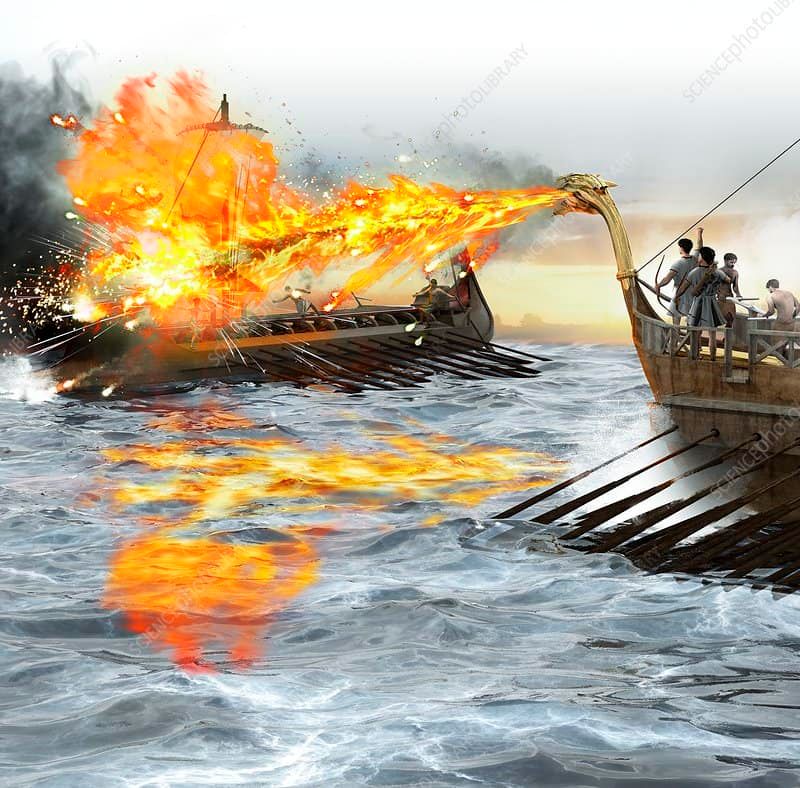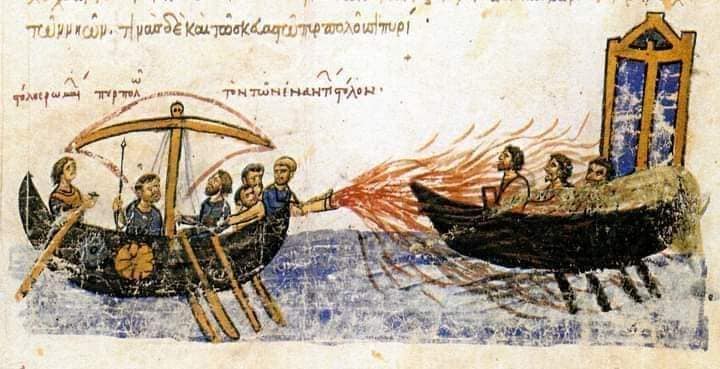In the annals of history, amidst tales of conquest and valor, there exists a weapon shrouded in enigma, its potency unparalleled in its time. Amidst the tumult of the Middle Ages, when empires clashed and kingdoms trembled, one empire stood as a beacon of resilience – the Byzantine Empire.
For over a millennium, from the dawn of the 4th century to the twilight of the 15th, the Byzantine Empire reigned supreme, its dominion stretching across lands and seas. Yet, amidst the splendor of its grandeur lay a secret, a weapon whispered of in hushed tones – the legendary Greek fire.

Legend has it that in the year 672 AD, during the reign of Emperor Constantine IV, the Byzantine navy unleashed this mysterious concoction upon their Arab foes, in a desperate bid to repel their advance. The Greek fire, a volatile blend of liquid flame, danced across the waves, consuming enemy vessels in its fiery embrace.
Crafted by the hand of Callinicus, a master architect of Byzantium, the Greek fire was a marvel of alchemy and ingenuity. Its formula, a closely guarded secret, veiled in the mists of time, confounded even the most astute minds of the age. Some whispered of naphtha and sulfur, others of arcane rituals and forbidden knowledge, yet the true essence of its creation eluded all who sought it.

But it was not merely the composition of the Greek fire that inspired awe and fear, but its sheer ferocity in battle. Unquenchable by water, it roared and raged, consuming all in its path with an insatiable hunger. To face the wrath of Greek fire was to court annihilation, a fate few dared to tempt.
Even now, centuries later, the legend of Greek fire endures, a testament to the ingenuity and power of a civilization lost to time. In its flickering flames, we glimpse the echoes of an empire’s glory, and the mysteries that lie buried beneath the sands of history.
